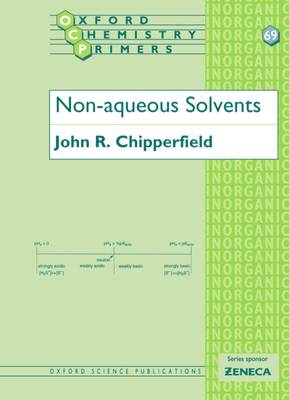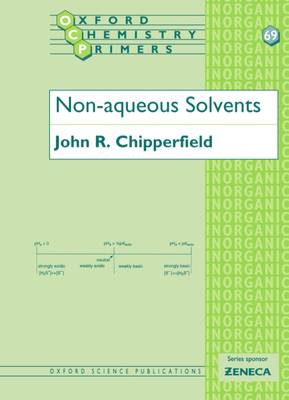
- Afhalen na 1 uur in een winkel met voorraad
- Gratis thuislevering in België vanaf € 30
- Ruim aanbod met 7 miljoen producten
- Afhalen na 1 uur in een winkel met voorraad
- Gratis thuislevering in België vanaf € 30
- Ruim aanbod met 7 miljoen producten
Zoeken
€ 37,95
+ 75 punten
Omschrijving
Solvents other than water are used in chemical analysis, chemical manufacturing, and in specialized syntheses. This book covers the principles and uses of non-aqueous solvents at a level suitable for first or second-year undergraduates. The book first discusses the general properties of solvents, and introduces the necessary concepts for making rational choices of solvents for different applications. There is a discussion of the various chemical interactions between solvents and the substances dissolved in them, and how solvents change the course of reactions. The chemistry of 16 common solvents is discussed, emphasizing the advantages and disadvantages of each. The book concludes with an account of the chemistry of molten salts and discusses the use of low melting temperature compounds as synthetic media. The book expands on the brief treatment of non-aqueous solvents given in many textbooks while avoiding the complexities introduced in research treatises. It is the only book
currently available that provides an in-depth treatment accessible to undergraduates.
currently available that provides an in-depth treatment accessible to undergraduates.
Specificaties
Betrokkenen
- Auteur(s):
- Uitgeverij:
Inhoud
- Aantal bladzijden:
- 96
- Taal:
- Engels
- Reeks:
- Reeksnummer:
- nr. 69
Eigenschappen
- Productcode (EAN):
- 9780198502593
- Verschijningsdatum:
- 29/04/1999
- Uitvoering:
- Paperback
- Formaat:
- Trade paperback (VS)
- Afmetingen:
- 241 mm x 183 mm
- Gewicht:
- 224 g

Alleen bij Standaard Boekhandel
+ 75 punten op je klantenkaart van Standaard Boekhandel
Beoordelingen
We publiceren alleen reviews die voldoen aan de voorwaarden voor reviews. Bekijk onze voorwaarden voor reviews.











